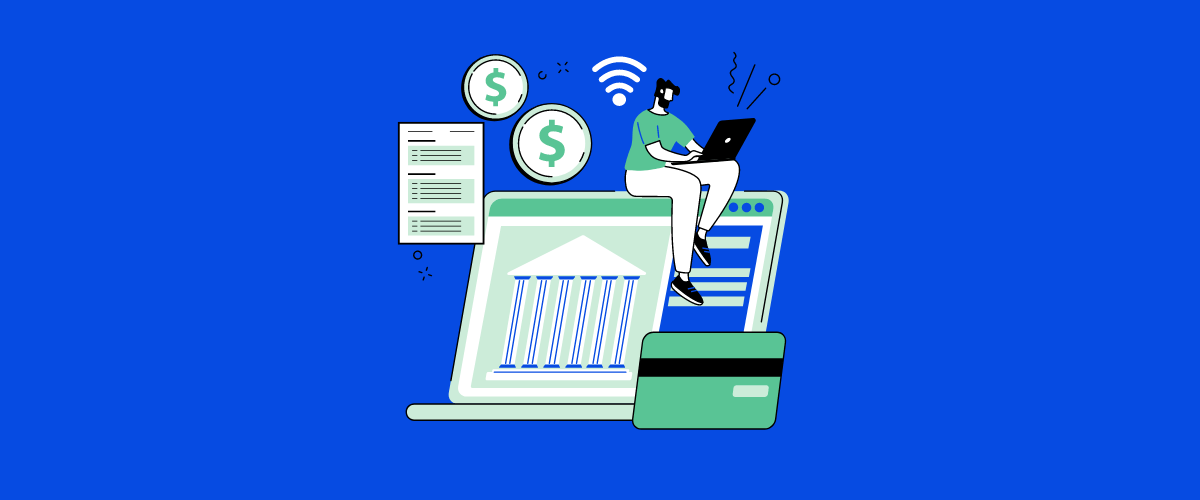Having a well-designed and detailed software development RFP is a must for successful vendor selection and subsequent completion of any software development process. If you’re wondering what a great RFP looks like and how to write one for the best bids, there is no fixed formula, but we do have some pointers for you. But let’s start with basics.
What is RFP?
An RFP or Request for Proposal is a document you prepare for potential software development contractors. In it, you should provide your relevant business goals, the technical requirements you have, and the exact project requirements.
Sending RFP is the next step after submitting the Request for Information (RFI) and shortlisting vendors who meet your requirements after this first step.
Based on the RFP and the information the vendors provide in response, you can select the right development partner for your project.
What is the difference between RFI, RFP, and RFQ?
For those who are new to outsourcing for their projects, the terms RFI, RFP, and RFQ might be confusing. The three are actually sequential steps you must take in the same order to find a vendor and start the development process.
- RFI, Request for Information is the first step to software development outsourcing, where you reach out to many vendors seeking information about the software development team, their capabilities, skills, functionality, location, and get to know the project scope.
- Based on the information the vendors provide, you will then shortlist the vendors you found more suitable and share the RFP with them. At this stage, project scope and project overview are known, and based on the vendor responses, you will then proceed to the third step.
- Request for Quotation or RFQ, at which point you will discuss the cost of hiring and ask the vendor to quote their price of service.
How software development companies use an RFP?
Software development companies you reach out to will use the RFP sent by you to figure out if they have the capabilities to work on your project or not. They will come back with an in-detail proposal of their own if they are interested. If they do not have the time or resources needed, they will pass over your project- this way you save a lot of time.
So now, when we’re clear with the terms let’s dig deeper into the subject.
When do you need a formal RFP?
When and why should you prepare a formal RFP?
Although sending out RFPs is increasingly the common methodology many companies use to get software development outsourcing done for their projects, there should be a solid reason behind sending RFPs. Creating and sending out an RFP is unnecessary if you already have a particular software development vendor you want to seek service from, but it is necessary if you have several options and want to compare them to find out which is best for you.
Preparing a formal RFP is a must for projects which require a lot of specific technical expertise, use of new software, and are generally more complicated in nature. It is a good idea to test the vendors and their capabilities by holding a meeting after sending out the RFP.
Are RFPs worth it?
There is a handful of factors you need to consider so you can decide if an RFP is worth it or not.
For one, the RFP process is a time-consuming one which can also be expensive. You need to consider the various stakeholders who will be involved in the RFP, from the vendors to your own staff, and consider if there is enough time on hand to wait for everyone who is in decision-making capacity to be on board for this.
You also need to carefully consider the scope of work in the project and conduct thorough research on the available service providers you are shortlisting for the RFP.
Doing all this will save time and valuable effort for you since you can decide based on these considerations if sending an RFP is worth it for you and your firm.
Tips for creating an RFP for software development to attract the best bids
🔸 Request certain details in submission from the vendors
One of the best ways to get enough material for a solid comparison of vendors is to include certain information requirements in your RFP template. Other than the basic background of the vendor company and an abstract, you may ask the vendor to furnish the following details:
- Company structure, qualification, location of offices.
- Project management details: the practices the team follows to work on projects, how delivery is handled, measures to perform quality checks and resolve issues
- Important details about the team members: their profiles, years, and areas of experiences, methods of communication in the team, should be provided.
- A technical vision of the project: a plan of sorts as to the technical details of how the team will execute the project, what technical tools and software will be used.
- Project plan: complete info on the step by step progression of the project, and the time scales by which deliverables would be ready.
- Details pertaining to analytics, practices for project support and assistance, parameters for improvement, and performance indicators
- All costs in the budget: the overall project cost, extra and overhead expenses, specialist’s costs.
- Reviews and testimonials by previous clients and customers.
🔸 Explain any jargon used in RFP with glossary.
To save a lot of time and ensure that both sides are clear regarding everything mentioned in the RFP, it is a good idea to provide an index or glossary explaining the jargon you may have used in the document.
🔸 Talk about company values, core vision, and culture.
In your software development RFP, make it a point to talk about the culture, values, and vision of your company. As important it is for the vendor and development team to be technically sound and brilliant at what they do, they should also be aligned to an understanding of what is important to your company and its core culture.
🔸 Detail any possible problems the project might face in the future so that the vendor is prepared.
It might seem extreme to already think of a number of troubles the project might run into, even before you have finalized the vendor. However, an important part of the selection process and as such, one of the purposes of the RFP is to mention any issues, delays, or roadblocks the project might face, so that you can identify the vendor who has the resources to tackle these potential problems.
🔸 Tell the vendor who your target audience is.
A part of the template of your RFP should also talk about your firm’s target audience. This will provide more clarity and context to the vendors you are reaching out to, as they will be able to understand much of your firm’s thought process and approach to business. As such, helping the vendors know your target audience is likely to help in filtering through the shortlisted outsourcing companies and find the best fit for you, who is able and willing to work according to your audience’s needs.
🔸 Shortlist the vendors who meet your RFI selection criteria.
Be selective with the number of vendors you send the RFP to. Some of your selection criteria will already have been met after the results of the RFI prior to this stage, so you should now select only the vendors you think will be the right fit given the current knowledge you have. This will save you from getting confused and bogged down with too much information and difficult decisions.
🔸 Explain all the functional needs of the project.
Functionality is key in the software development project, so be sure that you inform the vendors of the same in detail in your RFP. This way, there is no confusion as to what exactly you require for the project.
🔸 Specify what kind of vendor and developers you want.
Communicate clearly through the RFP document what kind of developers, and as such, what kind of vendor you are seeking for the project. For some projects, proximity in location is important, while for some, certain technical know-how is preferable. Since so much about collaborative work and team activity has changed because of the COVID-19 pandemic and new remote working conditions, consider reading What will project teams look like in 2020? And do some research on the same before filling in your RPF for the vendors.
🔸 Demonstrate honesty and openness with regard to budget and time scales.
Many people don’t like sharing all the details about project budgets and some tend to be vague about delivery timelines and deadlines. However, being unclear about all this only leads to miscommunication and can lead to conflict and heavy losses due to errors. In the RFP, clearly state the budget for your project and the dates for project phases and completion you have decided on.
🔸 Ask for details about quality assurance and testing procedures.
It is equally important to seek honesty and open communication from the vendor’s side. Thus, one request you can make in your RFP is for vendors to be transparent and disclose clear information about how they take care of quality assurance and go about testing their processes.
Wrapping up
RFPs are valuable for those projects that are complex and require technical finesse and are helpful in comparing vendor capabilities to find the best one. Thus, being clear about what you are seeking from the vendor and what the vendor should expect in the project are essential aspects of a good RFP.
Use this checklist to prepare a comprehensive request for proposal (RFP):
- General info about your company
- General info about the project (overview and goals)
- Details of work (project scope, metrics)
- Timing (milestones, expected deadlines)
- Selection criteria for vendors
- Budget and materials
- Project blockers (current and potential)
- Additional information (any details that can be important for your future cooperation)
Since creating an RFP is a tough and lengthy process, you can always reach out to a trusted expert such as YouTeam, because we understand how to create a detailed software development RFP, and can assure you the best of bids for your project.






